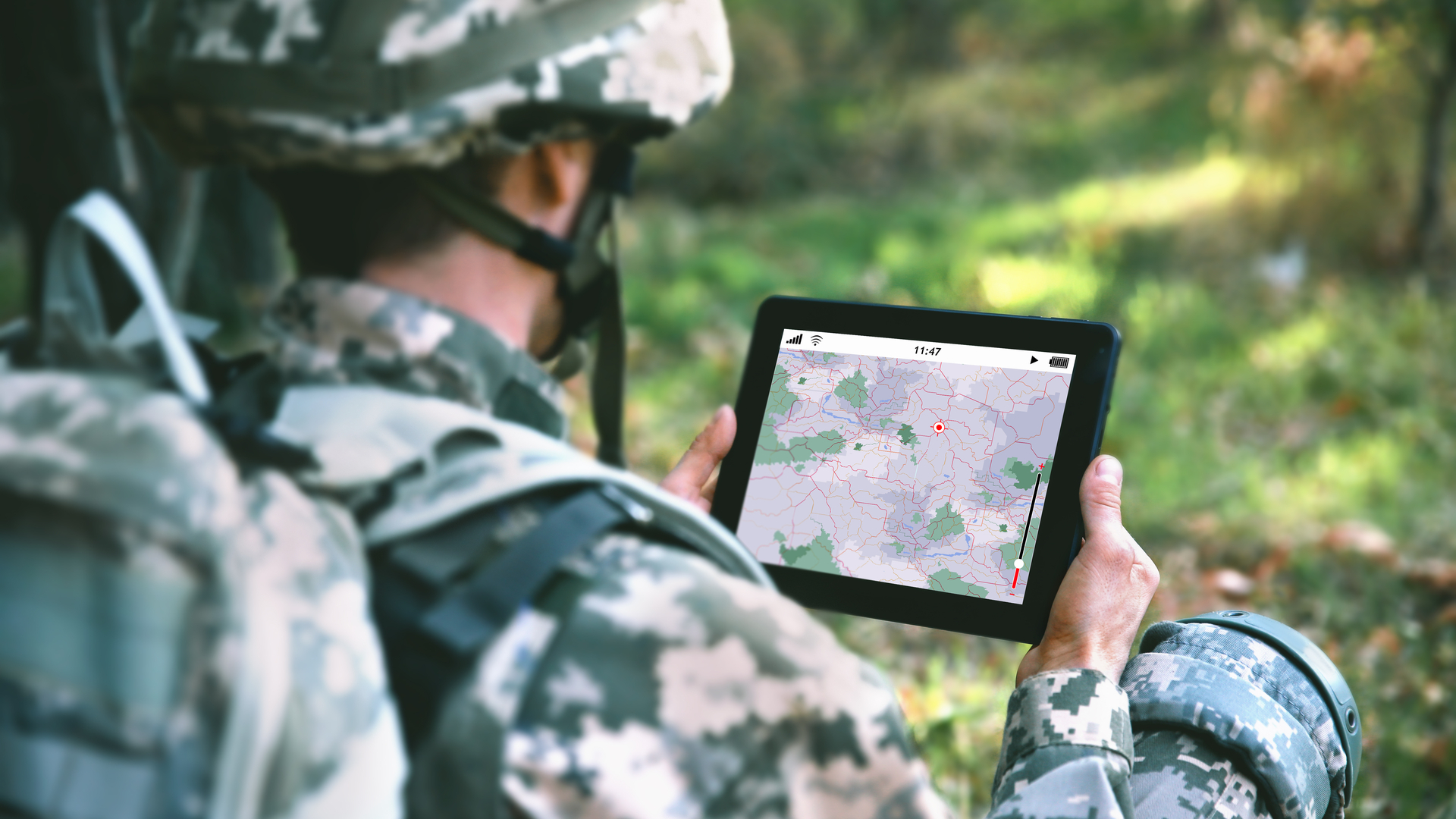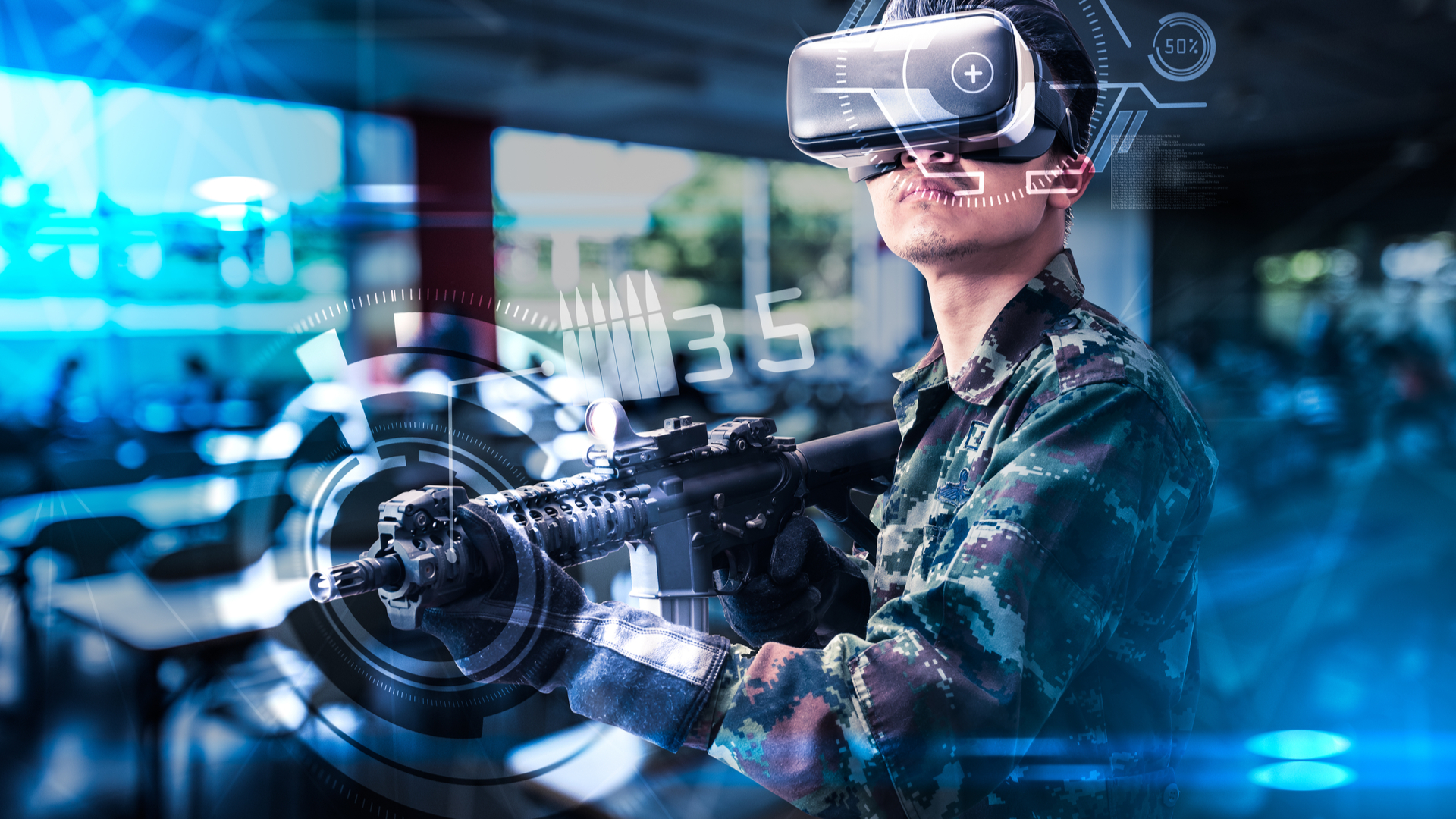How the 5G network could benefit the military
Will the armed services embrace 5G all-guns-blazing?

What happened to 5G? Once an exciting story about technological progress that was all about doing things faster on our phones, the next generation of mobile connectivity has now become intertwined with international geopolitics.
So what has 5G got to do with the superpowers? And how, exactly, could it be used by governments and the military?
5G: why is it a geopolitical issue?
It’s all about two of the dominant superpowers in the world, China and the USA. Although there are plenty of companies from around the world that are building 5G mobile networks (Nokia, Samsung, Ericsson, to name but three), a seriously big player across the world is Huawei.
It’s a completely different business to selling smartphones, but it’s the same China-based company. Huawei is involved in the construction of 5G networks around the globe.
However, the Trump Administration says it sees Huawei-made network equipment as a national security threat because Huawei is allegedly entangled with the Chinese state.
Does the Chinese government have a backdoor into Huawei-made network gear, and could it conduct secret surveillance through Huawei-built 5G networks? Could a country’s 5G network be completely switched-off in the event of a war? No-one really know the answers, but it’s also become terribly confused with the current trade spat between China and the USA, so it’s not clear what governments actually believe and what’s just fuel for the ongoing negotiations .
5G as critical infrastructure
However, one thing is very clear: the 5G network is already being regarded as critical infrastructure worth protecting before it’s even been built.
Sign up for breaking news, reviews, opinion, top tech deals, and more.
Just the speed and depth of its adoption could shape the competition for 21st-century dominance between the USA and China. If it’s going to be that important, it’s understandable that no country would want their telecoms systems and its ‘Internet of Things’ (read: airplanes, the electrical grid, dams, self-driving cars… everything) open to a remote attack by an enemy – although that’s arguably a very paranoid take on it all.
After all, if we’re talking about all China-made hardware being suspect, isn't the ever-popular iPhone built in China (along with almost every other piece of tech hardware)?
Moreover, any 5G network’s vulnerability in the event of a war – perceived or otherwise – is magnified because of how 5G is expected to revolutionize militaries across the world. Here’s how 5G could affect the military.

5G and hypersonic weapons
With a super-fast network able to exchange data in real-time over vast areas, 5G could have a role to play in something that’s long been talked about in the military: hypersonic weapons.
Now being developed by Russia, China, the USA and France, seemingly for 2022, hypersonic weapons will travel at Mach 5 – five times the speed of sound – and will cover a mile per second.
They will also fly at very high altitudes and on unpredictable flight paths, easily skirting existing missile defense systems. Intercepting them is therefore very difficult, but so is guiding them.
Where 5G comes in, is in hypersonic defense systems. An aircraft carrier, a military base, or even a city, is going to have less than a minute to react to an incoming hypersonic missile.
In short, incredible amounts of artificial intelligence-powered real-time data processing on targets and trajectories are going to be required to stand any chance of defending against hypersonic weapons. Cue 5G.
5G and the ‘smart’ military base
The high frequency, short wavelength ‘millimeter-wave’ spectrum that allows the 1Gbps+ speeds over 5G has obvious military potential.
It’s short-range only, so perfect for enabling smart military bases and command posts. Think millimeter wave-powered cameras and motion sensor-enabled tech around the perimeter of military bases, enabling command posts and vehicles to communicate with each other in real-time.
“Not having to worry about a lower range is okay,” said Gary Martin, the US Army’s former Program Executive Office Command Control and Communications–Tactical (PEO C3T) to Signal Magazine. “In some cases, you don’t want the signal to propagate too far because the enemy can detect it.”
That’s another bonus; 5G’s short-range millimeter wave signals don’t travel far.

5G and the ‘battle network’
Speed is everything on the battlefield, and 5G’s lower latency and higher capacity will enable armies to share more data, such as real-time maps and photos of battlefield scenarios, as well as computer simulations.
“5G’s true potential will be in its impact on the battle network of the future,” reads a recent report from the US Defense Innovation Board. “That network will increasingly include a large number of cheaper, more connected, and more resilient systems to function in a rapidly evolving battlefield.”
5G will also combine fragmented networks into a single network “to promote improved situational awareness and decision-making,” as well as logistics and maintenance.
Though millimeter wave tech would only be available on the battlefield in geographically restricted areas close to likely portable 5G base stations, an important, but mostly ignored part of the 5G specification is a low frequency, long wavelength connection.
It doesn’t carry anything like the amount of data being talked-up for 5G, but eventually this sub-6Ghz technology will become an integral way of communicating across huge areas. Offering far less bandwidth, but working across much larger areas, sub-6 frequencies are already used extensively by the military.

5G and ‘battlefield wearables’
An overlooked part of 5G’s capabilities is mMTC (massive Machine Type Communications), which will enable up to a million connected devices per square kilometer.
All of which can be fitted with sensors that collect and share data across a 5G network. Strap a smartwatch and bunch of biometric wearables to a soldier and their vital statistics – geographical position, heart-rate, blood pressure, and fatigue – can be shared.
Eventually we could be talking some kind of connected Google Glass-type augmented reality devices similar to what pilots already use, but with real-time data streaming in.
Either way, information about what’s going on in the battlefield is going to change utterly with 5G.
5G, drones and artificial intelligence
Unmanned aerial vehicles (UAVs) – AKA drones – are already used by the military. However, they don’t transmit and share real-time 4K video and other data across command-and-control centers, and units in the battlefield.
With 5G comes 4K video, object recognition, faster data processing and artificial intelligence (a good example is Project Maven), which will help reconnaissance missions and giving army units information on what they’re about to come up against. 5G could also help in more accurately and intelligently targeting weapons.
5G Uncovered, in association with Samsung, brings you everything you need to know about the next wave of connectivity - not just how fast it's going to be, but in just how many ways it's going to change your life. Our 5G Uncovered hub is carefully curated to show everything there is to know about the next generation of connection.

Jamie is a freelance tech, travel and space journalist based in the UK. He’s been writing regularly for Techradar since it was launched in 2008 and also writes regularly for Forbes, The Telegraph, the South China Morning Post, Sky & Telescope and the Sky At Night magazine as well as other Future titles T3, Digital Camera World, All About Space and Space.com. He also edits two of his own websites, TravGear.com and WhenIsTheNextEclipse.com that reflect his obsession with travel gear and solar eclipse travel. He is the author of A Stargazing Program For Beginners (Springer, 2015),